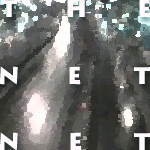In Gut Symmetries, her first novel since her artistic manifesto
Art Objects, Jeanette Winterson uses physics' Grand Unified
Theory, or GUT, as the main metaphoric premise. The story is diagrammed
out geometrically and is decorated with labels from astrology and the
Tarot. Alchemy is invoked. It's all a rather fine high conceit but the
meshing cosmic systems, while inspiring some beautiful flights of dense
poetic writing, leave no room for one of the most basic narrative
drives: convincing characters.
In her 1995 book of essays, Art Objects, Winterson declared her
full membership in high modernism. She nailed a copy of Woolf's The
Waves to her mast and set sail on a tempestuous sea. Written in
response to a raft of negative reviews of her novel Art and
Lies, the book contained pieces about art and modernism and a
defence of all her novels and of the technique of writing
uncompromisingly intense poetic prose. It's a fascinating insight into
what one writer thinks makes her tick and I read it with the attention
I'd normally give a full-tilt novel or a fascinating memoir.
But the risk Winterson takes with making the text paramount is starting
to show. All the passion in Gut Symmetries is in the phrasing;
none is in the characters. Jove, Stella, and Alice are in a romantic
triangle. Jove is married to Stella. He later has an affair with Alice.
Alice and Stella meet and start an affair themselves. It's all very
bloodless, a framework with hooks for Waves-like dialogues and
authorial monologues and poetic passages. Winterson wrote of
relationships with real blood in them in Written on the Body, so
this is not an ingrained flaw in her writing. Even in this book,
Alice's grotty old grandmother stands out as a real person, someone
with bite and blood, not like the three diagrammatic, New Yorkerish main
characters. It would be easy to dismiss Winterson's approach to marriage
and heterosexual relationships by pointing at her lesbianism and implying
she doesn't understand them, but to me the affair between the two women
was just as flat and bloodless as any other relationship described in
the book.
What writing like this tries to do is generate enough heat by its
metaphoric power alone that it rises above the mere carnal
particulars of human affairs and generates new insights and new
knowledge on the metaphoric level. Here and there Gut Symmetries
approaches that kind of unified power, but Winterson pulled off such
tours de force more effectively in Sexing the Cherry.
The irony of Winterson's style in this book is that it turns the
reader's expectations upside down. In a more conventional novel one is
usually more interested in the characters and what they're doing, and
authorial excursions and prosy passages tend to slow one down. In
Gut Symmetries the parts outlining the characters' backgrounds
and personal motivations are the brake; the motive power is in the
parts where Winterson stomps on the textual pedal and drives away at
top speed:
A wave function spreads indefinitely, though at its
farthest it is infinitesimally flimsy. Theoretically, it was always
possible, though unlikely, to find my father beyond the solar system,
his clustered energies elsewhere. [...] What physicists identify as our
wave function may be what has been traditionally called the soul. My
father, at the moment of physical death, may simply have shifted to an
alternative point of his wave function.
or
On the night I was born the sky was punched with stars.
Diamonds deep in the earth's crust. Diamonds deep in the stellar wall.
As above, so below. Uniting carbon mediated in my gem-stole body. When
a baby is born, its anterior fontanelle, at the back of the skull and
diamond-shaped, is the last of the sutures to close. Resisting
ossification, it is an eloquent wound. What has been, what will be,
star-dust that we are. Uniquely the carrier of history, this vulnerable
human cell, cosmos-hurled.
Reading passages like these, one can't help but feel that it's almost a
pity Winterson feels she has to waste time building a conventionally
novelistic plotline to give her an excuse to spout off. This is what
she does best, making beautiful piles and parallels of metaphors and
cascading them into glittering prose; toss a few concepts like "cosmos"
and "infidelity" at her and she's gone, and frankly I don't care what
the characters' mothers were like or where they went to school.
Is it worth it? I was thinking all the way through this book that the
story did not merit the density of the writing, but then what story in
our days does merit that kind of treatment? Quest stories and adventure
are banished to science fiction and genre writing; mainstream fiction
must concentrate on human relationships above all, and perhaps by
picking the eternal triangle, that banal yet tragic human theorem,
Winterson can almost dismiss the necessity for a standard plot and
merely use the premise as an excuse for amassing a novel-length
excursion in her high-style prose. In the case of most writers this
would be disastrous; Winterson's wordage is so well done that in her
case it only detracts partially from the book. But it does detract,
inevitably.



